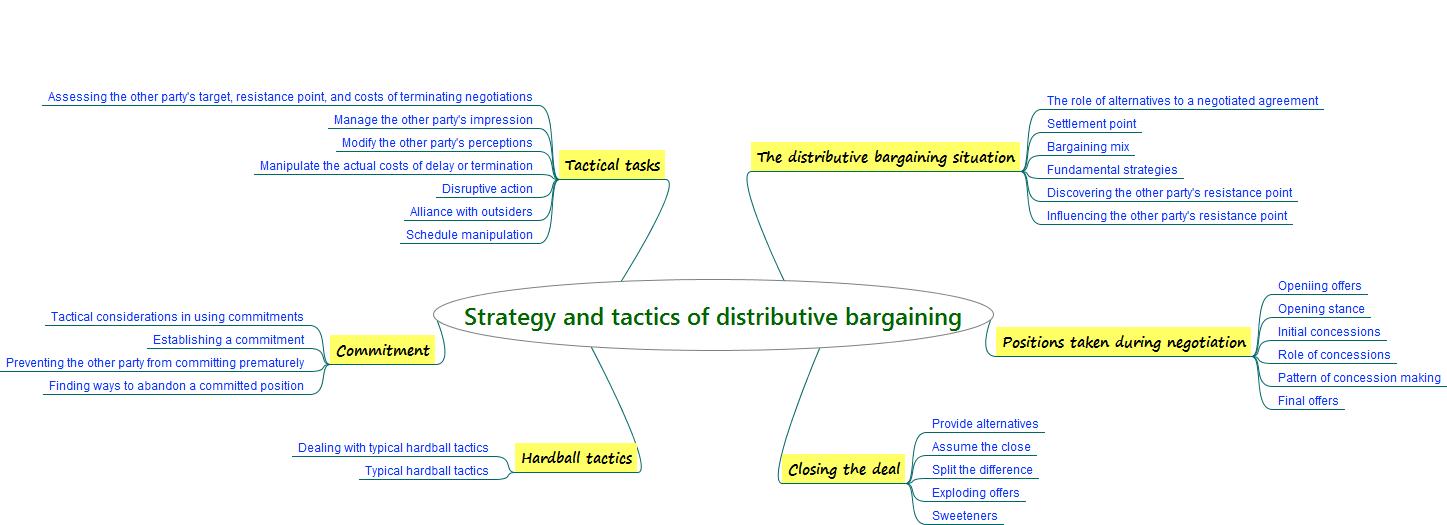BA370
Negotiation Chapter 02 : Strategy and tactics
of distributive bargaining
In this
chapter, we looked at the key elements of distributive bargaining, namely, the
bargaining mix, the BATNA, the bargaining range, the settlement point and the
stalemate.
We realized that, although ethical concerns exist for using distributive bargaining tactics, it is still important to study distributive bargaining so that negotiators can succeed in situations that are distributive. We studied positions commonly taken during the bargaining process such as the initial offer and the resistance point and we looked at strategies for closing a deal.
We realized that, although ethical concerns exist for using distributive bargaining tactics, it is still important to study distributive bargaining so that negotiators can succeed in situations that are distributive. We studied positions commonly taken during the bargaining process such as the initial offer and the resistance point and we looked at strategies for closing a deal.
Distributive strategies and tactics are important and
useful, but negotiators need to recognize that these tactics can also be
counterproductive, costly and may not work but it useful when negotiators want
to maximize the value obtained in a single deal, when the relationship with the
other party is not important.
Question 1 : What are 3 Reasons to be
familiar with Distributive Bargaining?
Answer:
1. Knowing how
it works to do better
2. Know how to counter the effects of the strategies
3. Every situation has potential to require skills at "claiming-value" stage
2. Know how to counter the effects of the strategies
3. Every situation has potential to require skills at "claiming-value" stage
Question 2: What are Tactical Tasks
of Negotiators?
Answer :
- Assess
outcome values and the cost of termination for the other party
-manage other party's impressions
-modify other party's perceptions
-manipulate actual costs of delay or termination
-manage other party's impressions
-modify other party's perceptions
-manipulate actual costs of delay or termination
Question 3 : How to Manage other
Party's Impressions?
Answer :
1. Screen you
behavior: say and do little as possible
2. Direct action to alter impressions: present facts that enhance ones position
2. Direct action to alter impressions: present facts that enhance ones position

No comments:
Post a Comment